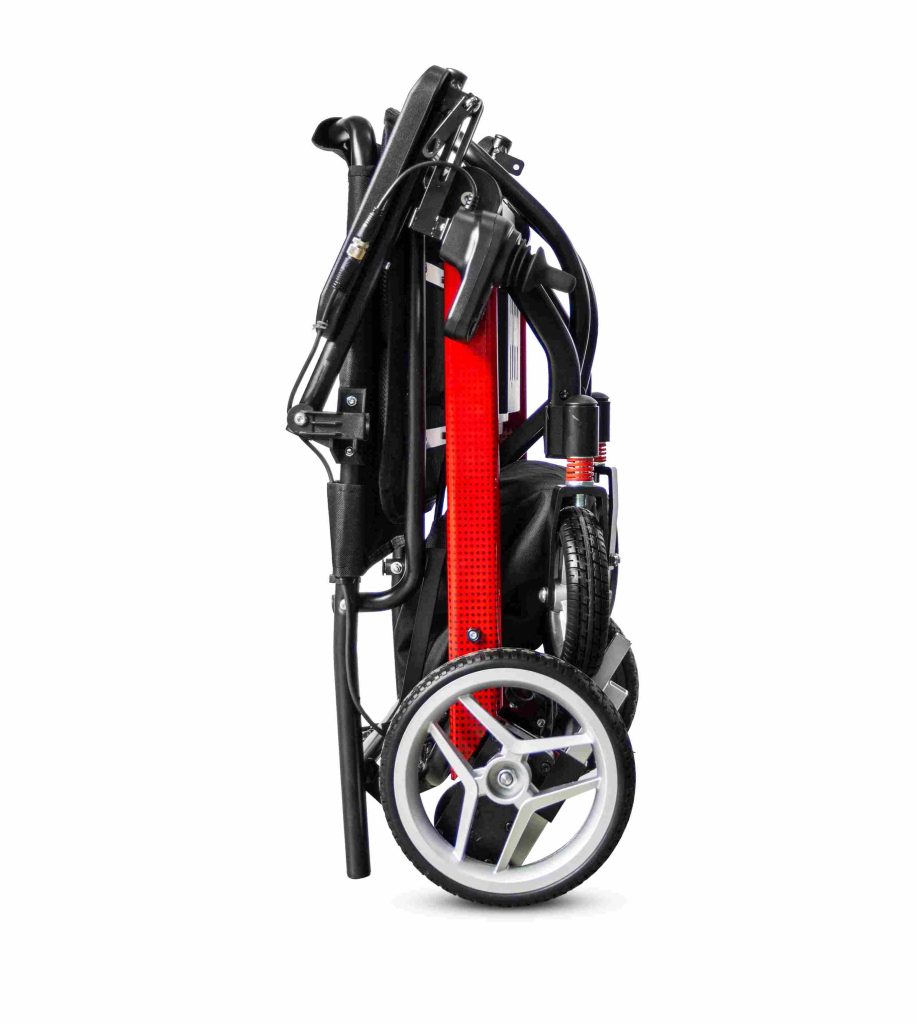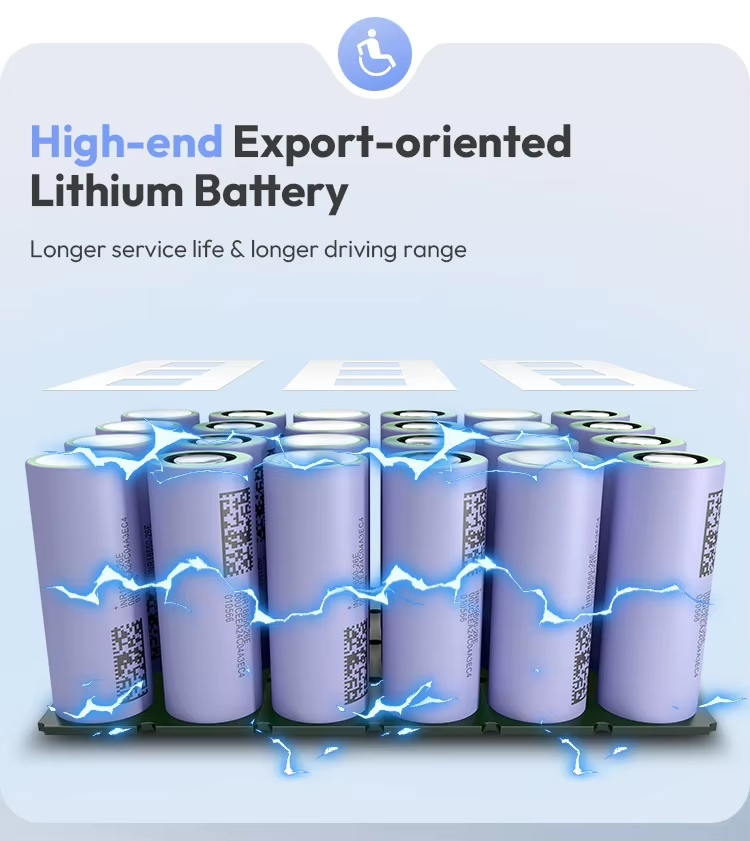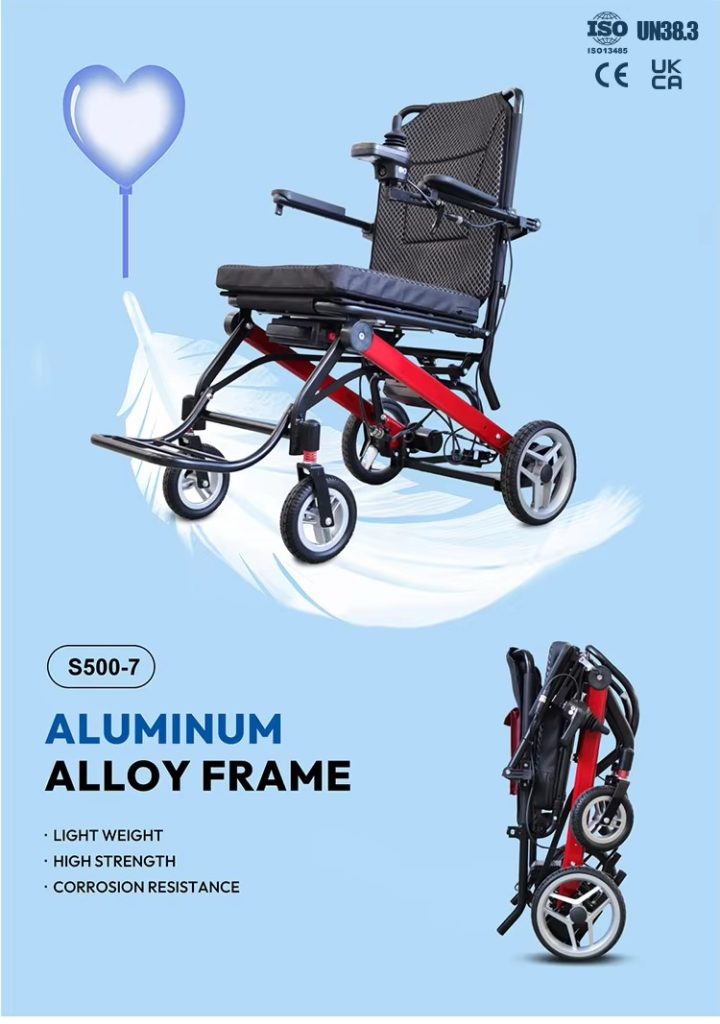Is the maze of Medicare making your head spin? When your mobility is on the line, the last thing you need is a bureaucratic runaround. You’re holding onto a simple, vital question: “Will Medicare help me get the electric wheelchair I need?” The fear of a denial, of facing staggering costs alone, is real. But what if I told you there’s a clear, marked path through this process? Forget the confusing jargon and the endless dead-end phone calls. I’m here to give you the map. We’re going to cut through the red tape together, step-by-step, so you can unlock the coverage you’re entitled to and reclaim your independence. This isn’t just another government guide; it’s your personal playbook for success.
The Quick Answer: Does Medicare Cover Electric Wheelchairs?
Yes, Medicare Part B absolutely covers electric wheelchairs and power scooters. It classifies them as “Durable Medical Equipment” (DME). Here’s the deal in a nutshell: after you’ve met your annual Part B deductible, Medicare will pay 80% of the approved cost. You are responsible for the remaining 20%. The single most important catch? The equipment must be certified by your doctor as medically necessary for you to get around inside your home.
Ready to untangle what “medically necessary” really means and how to navigate the approval process without a hitch? Let’s dive into the details that will make or break your claim.
First, Let’s Unpack “Medical Necessity”: The Most Important Rule
Before we look at a single wheelchair model, you have to get familiar with Medicare’s golden rule: medical necessity. This is the foundation your entire claim is built on. If you don’t meet this definition, nothing else matters.
For Medicare, a power mobility device (PMD), which includes both electric wheelchairs and scooters, is considered medically necessary only when your health condition significantly limits your ability to perform what are called Mobility-Related Activities of Daily Living (MRADLs).
What are MRADLs? Think about the essential tasks you need to do to live independently inside your own home:
- Getting to and from the bathroom
- Bathing and dressing yourself
- Getting in or out of a bed or chair
- Preparing a meal in the kitchen
The key is that your mobility challenges must be so significant that you are unable to accomplish these tasks safely, even with the help of a cane, crutch, or walker. The primary focus is squarely on in-home mobility. If you only need a power wheelchair to go shopping or visit a park, Medicare will typically deny coverage.
Power Wheelchair vs. Scooter: What’s the Difference in Medicare’s Eyes?
Medicare doesn’t see all power mobility devices as equal. They make a sharp distinction between a power-operated vehicle (POV), which you probably know as a scooter, and a power wheelchair (PWC). The one they approve depends entirely on your specific physical capabilities and limitations. Medicare’s policy is to cover the least costly medically acceptable item, so you must prove why a simpler device won’t work for you.
When Medicare Typically Covers a Power-Operated Vehicle (POV) or Scooter
You may qualify for a mobility scooter Medicare coverage if you meet the basic in-home mobility criteria and you:
- Can’t safely use a cane or walker.
- Are unable to operate a manual wheelchair.
- But, you have enough upper body strength and postural stability to safely sit upright and operate the scooter’s tiller steering system.
- Can safely get on and off the scooter.
Scooters are for those who need a boost but still retain a fair amount of trunk and arm strength.
When a Full Power Wheelchair Becomes the Medically Necessary Choice
A power wheelchair is considered a step up in terms of medical need. You would likely qualify for a power wheelchair if you meet the in-home mobility criteria and you:
- Do not have the strength, coordination, or postural stability to safely operate a scooter.
- Are unable to operate a manual wheelchair in your home (for example, due to upper body weakness).
- Require a more supportive seating system or need a different type of control, like a joystick control, because you cannot use a tiller steering system.
Essentially, you have to demonstrate to Medicare that a cane, walker, manual wheelchair, and a scooter are all insufficient to meet your medical needs inside your home.

Your Step-by-Step Guide to Getting an Electric Wheelchair Covered by Medicare
Getting your power wheelchair Medicare requirements in order isn’t automatic; you have to follow a specific, documented process. It might seem daunting, but I’ve broken it down into a simple, three-step journey.
Step 1: The All-Important Face-to-Face Doctor’s Visit
This is your starting line. You must have a face-to-face examination for a mobility device with your treating physician. This can’t be just any check-up; the specific purpose of the visit must be to evaluate your mobility limitations.
During this visit, your doctor will:
- Assess your physical condition and mobility.
- Document why a cane, walker, or manual wheelchair is not sufficient for your in-home needs.
- Determine if you can safely operate the power device.
- Potentially order a home assessment for the wheelchair to ensure the device will fit through doorways and be usable in your living space.
Crucial Timing: This face-to-face visit must occur no more than 45 days before your doctor writes the official prescription for the device.
Step 2: Getting the Official Written Order (Your Prescription)
After your examination, your doctor will complete a written order for DME. While you may have heard of a Certificate of Medical Necessity (CMN), Medicare has phased out this specific form. They now require a detailed written order (sometimes called a 7-element order) that includes:
- Your name.
- A detailed description of the item (e.g., “Group 2 Power Wheelchair with joystick”).
- The date of the face-to-face examination.
- The pertinent diagnoses/conditions that necessitate the wheelchair.
- The length of need.
- The physician’s signature.
- The date of the signature.
This doctor’s prescription for wheelchair is the legal and medical justification for your equipment. It must be sent to the supplier within six months of your exam.
Step 3: Finding a DME Supplier and Getting “Prior Authorization”
With your written order in hand, you’ll work with a Durable Medical Equipment (DME) supplier. But here’s a critical step: for most power wheelchairs, the supplier must get prior authorization for the power wheelchair from Medicare.
This means the supplier submits all of your documentation—the doctor’s order, notes from your mobility exam, and any other evidence—to Medicare for review before you get the wheelchair. Medicare then reviews the case to confirm you meet all requirements. This is actually a good thing; it ensures you won’t be stuck with a massive bill for a non-covered item after the fact. The DME supplier handles this entire submission process for you.

How to Find the Right Medicare-Approved Supplier (and Avoid Costly Surprises)
This step is just as important as getting the prescription right. Choosing the wrong supplier can leave you paying 100% of the cost, even if you have a valid prescription.
The Golden Rule: Only Use Suppliers Who “Accept Assignment”
You must find a Medicare DME supplier who “accepts assignment.” This is non-negotiable.
- What it means: The supplier agrees to accept the Medicare-approved amount as full payment for the wheelchair.
- What you pay: You are only responsible for your annual deductible and the Medicare 20% coinsurance.
- What happens if they don’t accept assignment? They can charge you more than the Medicare-approved amount, and you’ll have to pay the difference. In some cases, you might have to pay the entire bill upfront and wait for Medicare to reimburse you for its share.
A Quick Guide to Using Medicare’s Official Supplier Finder Tool
Finding suppliers who accept assignment is simple. Medicare has made it easy to perform a Medicare DME supplier lookup.
- Go to the official website: Medicare.gov/supplier.
- Enter your ZIP code.
- Type “Power Wheelchairs and Scooters” into the equipment search bar.
- The tool will generate a list of approved suppliers in your area.
Examples of well-known national suppliers that often work with Medicare include Hoveround, Pride Mobility, Numotion, Apria Healthcare, UniversalMed Supply, and retail sites like 1800Wheelchair and SpinLife. Always confirm their participation status directly before ordering.
Let’s Talk Money: What Will You Actually Pay Out-of-Pocket?
Understanding your out-of-pocket costs for a power wheelchair is key to financial peace of mind. Assuming you’ve met all the medical necessity requirements and are using an approved supplier who accepts assignment, here’s the cost breakdown under Original Medicare.
The Deal with Renting vs. Owning Your Wheelchair
You might be surprised to learn that you won’t own your power wheelchair on day one. Medicare has a 13-month rental rule for most wheelchairs.
- For the first 13 months, you are renting the equipment. You’ll pay your 20% coinsurance on the monthly rental fee.
- The supplier is responsible for all wheelchair repair and maintenance during the rental period.
- After 13 consecutive months of rental, ownership of the equipment transfers to you. After that, Medicare can help cover 80% of the costs for repairs.
How Medicare Advantage or Medigap Plans Can Lower Your Costs
Your out-of-pocket expenses can change if you have other insurance in addition to Original Medicare.
- Medicare Advantage (Part C) Plans: By law, these plans must cover everything Original Medicare does, so Part C DME coverage is guaranteed. However, your costs (deductibles, copays) can be different. You will also likely be required to use suppliers within your plan’s specific network. Always contact your plan directly for details.
- Medicare Supplement (Medigap) Plans: This is where you can see significant savings. Many Medigap plans cover the 20% Part B coinsurance. This means a Medigap plan could pay that 20% share for your power wheelchair, potentially leaving you with little to no out-of-pocket cost after your deductible.
Frequently Asked Questions (That I Hear All the Time)
Let’s clear up a few common points of confusion that often trip people up.
“What if I only need a wheelchair for outside my home?”
This is a common question and a major sticking point for Medicare. As we’ve covered, Medicare’s coverage for a power wheelchair or scooter is based on the need to perform MRADLs inside the home. If you can walk around your house just fine but want a scooter for long distances at the mall or park, Medicare will not cover it. The need for in-home mobility must be the primary reason for the prescription.
“How often can I get a new power wheelchair through Medicare?”
Medicare considers most DME, including power wheelchairs, to have a “reasonable useful lifetime” of five years. This means that, in most cases, Medicare will help you replace your equipment once every five years. If your condition changes significantly and you need a different type of chair, or if your chair is lost, stolen, or damaged beyond repair, an exception can be made, but it will require fresh medical documentation.
Your Path to Mobility is Clear
Getting an electric wheelchair covered by Medicare is not a game of chance; it’s a process. And now, you have the playbook. It all hinges on one simple truth: you must work with your doctor to clearly document why you need a power mobility device to live safely and independently in your home.
From there, the steps are clear: get a detailed written order, choose a supplier that accepts Medicare assignment, and let them handle the prior authorization. Don’t let the paperwork intimidate you. By following this guide, you are taking control of the process. You are no longer just hoping for an approval; you are actively building the case for one.
Your independence is worth fighting for, and now you have the tools to do it. Thanks for reading, and I wish you the best on your journey to renewed mobility.

